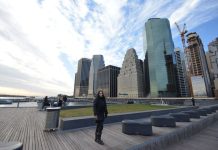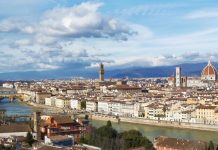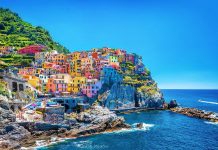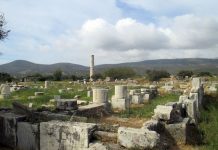The main attractions of Munich are in the Old City, although some palaces and parks lie outside it.
Since its founding by Henry Lion in Munich in 1158 the center of the city is Marienplatz. Prior to the beginning of XIX century there were grains and peasant markets, and in medieval times it was a place of knightly tournaments.
His present name Marienplatz obligation column of Mary, which was erected in the center of the square Humbert Gerhard in 1638 in honor of the patron saint of Bavaria. The four winged figures, which were originally created for the Frauenkirche, symbolize the four hostages plague, war, famine, and heresy.
The outstanding architectural creation is built on the Marienplatz on the orders of King Ludwig I of New Town Hall. The central part of the building in the style of Gothic forms a 85-meter tower with a favorite Munich chimes. The facade of the New Town Hall nearly 100 meters and ornaments adorn the figures of the Bavarian dukes, princes, kings, and legendary characters and saints. Courtyards are arranged along the lines of Gothic castles and courtyards are helical staircase tower and stairs to the spacious grounds.
A favorite meeting place for young people is built in the years 1862-1865 fountain Fishbrunnen.
In the pedestrian zone is located Frauenkirche – the most famous symbol of Munich. This building has a rich history. Construction of it started in 1468, and the consecration took place already in 1495-m. But the women’s quarters of both towers were erected only in 1525. The main decorative objects, including the altar, refer to the XVII century.
Another symbol of Munich is the residence of the Wittelsbach dynasty, which for 500 years was a permanent seat of the dukes, princes and kings of Bavaria. Buildings of the residence was built from the XVI to XIX century. It belongs to the outstanding achievements of European Renaissance and, including a six households, divided into three main groups: the royal building, the old residence and a building with a hall for celebrations. Open a treasure-house residence. Launched in Albrecht V, the collection consists of works of goldsmiths, works on enamel, crystal and ivory from the Middle Ages to the Rococo. In the halls Portsellankammer housed a collection of European porcelain of the XIX century. The building of the Hall of celebrations length of 250 meters with a two-story columned portico bears the stamp of royal representation. Statues on the portico are “eight laps of Wittelsbach Bavarians”.
In the old picture gallery there is a unique collection of antique German and Flemish paintings. There are also Italian, Netherlandian, French and Spanish schools. Thus, the old picture gallery creates a vast panorama of the major currents of European tradition of painting from the XIV to XVIII century. Most of the paintings are from the collection of the House of Wittelsbach. Old picture gallery was built in the years 1826-1836. Leo von Klenze in stylistic forms of Venetian palaces of the Renaissance.
New picture gallery postmodern form of their free architecture interesting contrast to the symmetrical architecture of the palace of the old picture gallery. This is the largest museum building of the postwar period was built in 1975-1981 years. New picture gallery Collection includes about 550 paintings and 50 sculptures of the period between the Rococo and Art Nouveau. Including – the work of Goya’s early romantic (Caspar David Friedrich), French and German late Romanticism (Delacroix, Shpittsveg) Impressionists (Manet, Cezanne, Van Gogh, Corinth), the Symbolists and the modernists (Klimt, Stuck, and Toulouse-Lautrec).
Bavarian National Museum is one of the most important museums of European culture and applied art in Germany. His collection can be divided into two large sections. Art-historical collection is European art and craft work from the early Middle Ages to the twentieth century. The collection of folk art includes, inter alia, the Bavarian pottery, games, watches and measuring instruments.
In the same building located New (telling about the creative development of applied art in the twentieth century), and prehistoric collections.
German Museum
This is one of the most important museums in the world in science and technology. Here, almost 17 thousand exhibits.
In the adjacent Forum technology is the most modern planetarium in the world.
Fans of technology can also visit the Museum of BMW, which tells about a 50-year history of the Bayerische Motoren Werke, producing the famous aircraft engines, motorcycles and cars.













